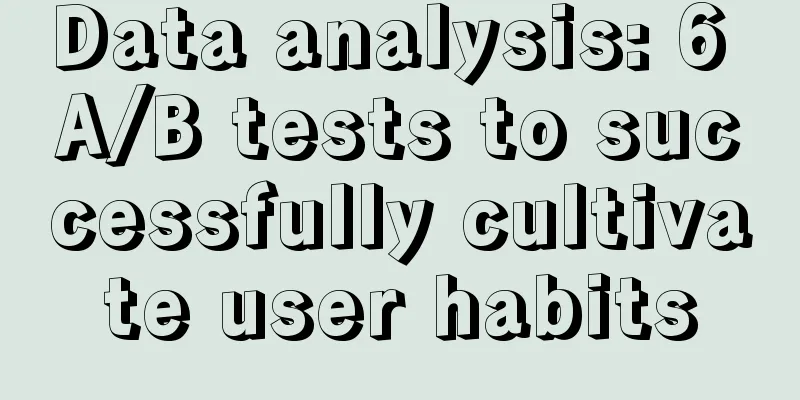How to get into Google

|
When I first joined Google about two years ago, I was often asked two questions: 1) How did I get in? 2) Share some experiences. I promised to answer these two questions a long time ago but never got around to it. Mainly because I am an introvert and shy person, but also because I don’t have the time (not an excuse), or maybe I just mistakenly thought that answering these two questions wouldn’t be very interesting. Now, I have decided to fulfill my promise - to write down my experiences and lessons seriously. I hope that the experience will still be useful to everyone now because of its timeliness. I will try to summarize my experiences and lessons learned and provide you with a few suggestions. Finally, a word of caution. This article is not a guide on how to get a job at Google. In my experience, there is no such guide. This article will not go into too much detail about interviews (such as what questions interviewers ask) or disclose any confidential information (serious face). The sole purpose of this article is to talk about my experience before joining Google. I hope it can be helpful to the readers (fans), even if it is just a little bit. Bread and Beret Let me introduce myself briefly. I am 27 years old and I am French. I lived in Lagny, a small town in the countryside of Paris, until I was six years old and then moved to the south of France. During this time, I lived and studied in many cities, such as Toulon, Hyeres, Arles and Marseille. study I graduated from high school with a degree in "Society and Economics", then spent two years at the General Technical School and three years at the Multimedia Project Management School. What these schools and courses have in common is that they teach students generic methods to achieve different goals. They have no sense of specializing students. I think they want to train me to be a universal Swiss Army knife. My high school diploma equals some basic social science and economics mixed with history and philosophy plus a little bit of math. In the next two years I learned a broad range of things that can be done with computers, from programming to design to photography. I majored in multimedia management during my three years of graduate school. It was basically all about how to manage people, manage projects, give speeches, and how to dress. Looking back now, the longer I stayed in those schools, the less time I spent learning the skills I use in my current job. I learned in school what I didn’t want to do. I think the main purpose of school is not to teach you something, but to expand your horizons. I have basically forgotten what I learned in school, but school helped me figure out what I want to do and what I don't want to do. Only when you learn something do you realize which skills are not suitable for you. I learned math only to realize I hated it, and I learned programming only to realize I loved aligning pixels. I wore a suit only to realize what I liked to wear. In the process of learning to manage people and projects, I longed for a life of listening to Hans Zimmer and Amon Tobin soaking in Photoshop every day. Maybe this isn’t the best path to learn, but it’s how I did it. Don’t get me wrong, I did learn a lot of useful things in school, but it was the classes that annoyed me that really benefited me and led me to the most useful and commonly used tools I have today. In any project, I take the initiative to do the design part. Design is like my refuge. Focusing on one thing is my resistance to rote learning. In the five years after graduating from high school, I ignored a lot of non-design knowledge that might have helped me in my future development and focused on studying the details of interaction. Is this the right thing to do? I don't know. I'm not smart. But focusing on doing things is more suitable for me. To sum up myself after completing my studies: I am an interactive designer who focuses on Internet and mobile design. I can confidently and comfortably present my ideas in front of others. My daily routine is as follows: I spend 1.5 hours a day discovering, saving and categorizing inspiring materials on the Internet and then spend 8 hours doing visual design. Finally, I must emphasize that I speak English well, which is very important. Work My work experience and my study experience have always been intertwined. Three years of multimedia management is just a supplement. I studied for a month and then spent two or one months looking for a company with super good character to hire a rookie like me. The luckiest thing for me is that the company I work for not only lets me serve tea but also lets me do some actual work. I am still deeply touched by this trust. Here is the experience sharing time: Question: The best way to learn is to work for real companies with real people. The benefits of working while studying far outweigh the benefits of studying. Any internship will teach you much more than what you will learn in class. I don't mean you don't need to go to school. You need to learn the basics, but applying what you learn to solve real problems is the most important thing. For me, a combination of school and real work is the best way to learn, at least in our industry. First Year In the first year, I learned print, logo and identity design. By intern standards, I did a great job. By professional designer standards, I was pretty good. Now it seems that the part I was responsible for was full of mistakes. Fortunately, my friends have been helping me clean up the mess. In your life, you will meet many noble people who help you grow. These people let you stand on their shoulders to reach goals that you dare not imagine. Just like my first boss. There were only two of us in the company. He was experienced, patient, and liked to share. Whenever he found even a little strength in me, he would help me expand it. These are all unexpected. It is totally unexpected that someone who works hard for a living would have the energy and desire to help others grow both professionally and personally. I also try to be like my boss, but unfortunately I am far from doing enough because this behavior requires a more selfless heart. Second and third year of work I spent my second and third years of graduate school at a different company. I left my first company because I needed to make more money (main reason), the intern had become a liability to my first boss (excuse), and I was ready to move on (truth). The second company was a small Internet agency, and the founder was tired of being ordered around and wanted to do something cool for himself. Here are some suggestions for designers who are looking for internships: Advice: Smile and commit. It's simple. Back when I was introvert and had little confidence, to say I wasn't impressive enough during the interview was an understatement. If I hadn't had the support of the company's staff, I'd probably still be looking for an internship. Back to the topic just now. I was really lucky to have two bosses like my first one in a row. Luck is a very important factor in everyone's career. I will discuss it in detail later. My skills have improved rapidly in the past two years, mainly because I have the opportunity to hone my skills in many different types of projects and can move between internal projects and client projects. This allows me to support myself while also having a little work freedom. I even designed email formats for several email group systems, which is an unspoken rule of survival in the designer industry. The following suggestions are very important: Advice: Not every project you take will be something you can brag about, but you can always learn something from every project. (How much do you hate the email guys who design things?) The same logic as going to school, doing something you don’t like will strengthen your skills as a designer and defend your dignity as a designer. Fortunately, most of the work is very interesting and can bring challenges to many young designers. During this period, my skills have grown rapidly and comprehensively, because I am fully responsible for my work and have absolute autonomy. My boss is my refuge and mentor. He always gives me appropriate guidance when I need it, but he will not interfere with my work. Be a safe haven for the person you want to help grow. Make him feel like he has influence and control over his work. I worked at the company full-time for a year after graduation and before I went to work at Google, and I loved every day of my time there. Self-study Besides going to school and hanging out with the best people, self-study is the best way to advance in anyone’s career. Some even say that self-study is the only necessary learning path for every designer. Anything or anything that interests you should naturally lead to self-study. The best state for self-study is when you are having fun. For me, the best way to learn by myself is to study other people's work and reverse engineer the .psds shared by others. This is also one of the reasons why I am sharing this issue - to give back to the society. #p# Social and designer circles I used to hate socializing. Although it's better now, I still look weird. I guess my expression sometimes makes people feel annoying. But I think it's mainly because of my introverted personality. Anyway, I realized at a young age how much networking can help everyone’s career, especially in our industry. Dennis Covent clearly explains why I’m so awesome in his blog, and the benefit of this is that I don’t have to spend time explaining the same things. The best thing about the Internet is that you can contact anyone on the Internet without meeting them in person. You can brand yourself as a designer and announce your existence to the world simply by participating in various online communities. Suppose you are on an isolated island, if there is an Internet connection, you are as likely to be recognized as any other Internet user. The above assumption is of course not entirely correct, an extroverted man living in San Francisco is certainly more social than a brown bear with a spotty internet connection living in the mountains of France. Thank the Buddhas and Bodhisattvas, I am not a bear, I have a stable internet connection and I have the urge to share. So I opened a blog on Tumblr. My blog is basically sharing my thoughts on design and everything related to design. Although I don’t have many readers, I enjoy it. Here are the important tips I learned from blogging: Assuming you like sharing, even to a very small audience, as long as you like it, try to keep doing it. I kept writing my little blog and I was noticed by the biggest design company in France. My readership exploded after that. After I discovered Orman Clark and his "Premium Pixel" my focus changed from sharing inspiration to building my own design resource library, which I called "freebie". I was and still am a die-hard Orman Clark fan. It was the perfect way for me to improve, satisfying my need for high pixels and giving me lots of inspiration to share. Reverse engineering was the third way I learned and improved. I even started writing tutorials. Then the blog owner threw a question to me: "Do you need an invitation to Dribbble?" (Dribbble is an online Q&A platform for designer experts) Dribbble: The reason I created a section dedicated to Dribbble is to make a point. Dribbble has had an inestimable impact on my career. I joined Dribbble and published my first show on March 6, 2011. My followers increased rapidly after the first show was published. At the same time, I was also updating my freebie at a rate of one post per week. Apart from working and updating my blog with photoshop, my time was spent on Dribbble and freebie. This obviously had more benefits than I expected. Suddenly, jobs outside of France started to come to me. Of course, that’s how Google found me. A little "private work" At that time, I was still in my second company and had already started to take jobs through Dribbble. My first private job was from a Swedish printing company. It was an exciting and challenging job for me as a fresh graduate because I didn’t know how to handle business matters. After hearing about it, the boss agreed to complete the project in the name of the company, and he would handle the business side of things while I would handle the professional side. In my experience, as a young designer, you must seize the opportunity to work for people outside of the classroom. This is the best way to learn. The project went smoothly, the client was satisfied, and I delivered on time. This was the beginning of a good relationship between me and the Swedish company. I deliberately put this work in my portfolio because completing a job well outside my comfort zone greatly boosted my confidence. Accomplishing work outside your comfort zone can be a huge confidence booster. My daily routine became posting on Dribbble frequently, and spending half of my time in Photoshop, designing mock-ups for websites, email systems, iPhone and iPad apps. I designed almost everything, from buttons on a web page. I had more and more followers and job offers. I took on projects in France, Denmark and the United States. Each project expanded my design horizons, ranging from social structures to DJ software. When I was overwhelmed with work, I learned to pick and choose the projects I wanted to work on. The criteria were that I really liked the company and that I had time to start some new work of my own. The only reason why work was going really well was that all of my work came from clients on Dribbble who knew what I was good at and what I wanted. Being able to pick and choose your own clients is a luxury. I was able to enjoy this luxury because I had a full-time job. If you have time and your situation allows, do some private work while your full-time job is still available and see what surprises the Buddha has prepared for you. But be prepared to stay up late every day. After accumulating so many clients, I finally built up my portfolio. Then: Work for free! (Before reading on, I recommend reading Dann Petty's article.) I know this is a delicate topic. Every job needs to be worth its weight in gold. There are a lot of people willing to take advantage of this opportunity to give new talent a chance. You'll hear requests like "I'm going to make a website like youtube.com for $200." or "There are five designers working on this job, and I'm only paying the one I like." Working for free is all about building my portfolio All of this is based on the premise that you can afford your daily expenses. The biggest advantage of not charging is that you can choose the projects you want to work on. In this way, you can work happily and show your results happily. If you are lucky, the door of opportunity will open for you. That's how I completed a lot of projects for free, such as any student organization that needed an advertisement designed, any small web design. It's best to do these things when you are a student, while you are still willing to work overtime and do all kinds of odd jobs. Others will definitely let you be cheap labor, but experience is invaluable for young designers. You just have to be careful to distinguish between opportunities and traps. Given that you can pick your own clients, working for free is a luxury that not everyone can enjoy. "Just chatting?" A few years passed and I received an offer from a Spanish company. Strangely enough, it was the first time someone wanted me to work for them officially, in a large organization, outside of my home country. He wanted to know if I would be willing to come and have a chat, at their headquarters in Spain. I explained the situation to my boss, and he responded, “Go for it.” Remember the people I mentioned earlier who helped you grow? So I set off to Spain. I didn't really like the city I was living in, and although I loved my job, I saw an opportunity to grow. If you see an opportunity, even if you have even the slightest doubt or hesitation, go for it. The Spanish guys paid for their flights and accommodation just to chat with me. I know, for some people this is normal. For me, who often encounters clients who are too stingy to pay a few more dollars for a good design, this is awesome. These Spanish guys, they are willing to pay for everything! After arriving, I went through the interview process. Everything was going great and I started thinking about moving from France to Spain. The people are cool and the commute is not too far. A week later I got another email. It’s a scam You may have guessed it, this is an email from Google. I really thought it was a scam email. It was totally beyond my imagination. I still replied, just in case. It was a holiday in the US, and it took about five days for me to receive a reply, which made me more convinced that it was a scam. When I found out it was real, I couldn't wait to learn more. After answering questions like whether I was willing to move to the United States, Google HR informed me that I would immediately proceed to the interview process, starting with a phone call from a Googler. Now I have to thank the thousands of hours I listened to American dramas while working. Otherwise, the first phone call would have been very confusing. Although there are still some comprehension problems, there is a big difference between passive listening and actually communicating with people, and the two weeks I went to the United States for an exchange program when I was 14 didn't seem to help. I thought I had done a terrible job, but it seemed like Googler was willing to continue. The next step was a design exercise. This is the part that gets me fired up. I finally get to show how I think my work should be published. The process is not much different than when I present to other guests, but the results can change a person's life. I sent my final work while praying and trying not to imagine their laughing faces when they received my work. Two weeks later, they told me to go to Mountain View for a chat. What am I doing here? At the time, I was traveling in New York with a buddy, on a trip with the theme of "We finally don't have to go to school anymore." We chose the United States because we wanted to get to know the United States and New York better. The email notifying me of my employment was received during this period. I had to go to Starbucks twice a day to use the wifi and check emails. I told Googlers that I was in New York, so it would be much more convenient if we wanted to meet. The two sides hit it off, and two days later I was on a plane to California. I landed in San Francisco and drove my rental car to meet my future colleagues on the road I would drive every day to work. Big Deal For Me! The next day, the formal interviews started. They were over before I knew it. I still remember that between the two interviews, the Google guys asked me when I was going to join Google. I answered that I had never thought about it because I never dared to think about it. The probability of joining Google for me was almost zero. Although this is not a good answer, it is the most true answer for me who is tired and desperate. reality Sometimes when you think about it, this may actually be the best approach. No matter what job you’re applying for or what situation you’re in, telling the truth is the best approach. Saying the right thing at the right time may get you a job, but you run the risk of not getting the right thing. The same is true for your boss a lot of the time. I didn’t forget to smile this time either. All that was left was to wait for the final result. I boarded the plane back to New York and looked out the window at San Francisco, a city I would explore in the future to find a place to live. luck On Friday I got a call asking if I would like to join Chrome. I said yes without even a second's hesitation. The Internet has helped me get to where I am now, and it's time to give back and make the Internet experience better. If joining Google is one of your goals, you might say I was lucky. I was lucky because I found out what I wanted to do when I was in school, I met two good bosses in a row, I was invited to Dribbble when the googler was searching for the right person on Dribbble, I was in the US when they wanted to meet me, and there was a quota when I applied for a visa. So, you are absolutely right. Luck played a very important role in the whole thing. If there was no luck, I would not be here to share this. One more thing: Be prepared for luck, and if she favors you, you'd better catch it. Conclusion When I read this article myself, I felt like I was writing a magic story and it sounded like an advertisement. It is also possible that you disagree with Google's current practices, although reading this entire article seems to have wasted a lot of your time. This is just my personal opinion. I try to share what it was like at each stage in my life. I'm really grateful that I've been working with people who are smarter than me. Is it super awesome every day? If you ask. Not really, it can be a very frustrating experience and you can't agree on everything. You're part of a machine that's doing projects of a completely unimaginable level. That's part of the appeal. Will I stay at Google forever? I don't know. I've had my ups and downs with Chrome, but I love Chrome, Chrome OS, my team, and Google. Right now, I don't want to go anywhere. I think the most amazing experience is that I came to Google, not just in Google but in the entire Bay Area. Every time I acted like a cared-for child, I kept reminding myself that Google could realize I was a fraud at any time and send me back to France. |
<<: 7 Signs You're a Bad Programmer
>>: 6 iOS Image Text Design Tips
Recommend
Aesthetic Corrective Makeup Ultimate Lifting Base Makeup Treatment
Introduction to the resources for the ultimate li...
Should the Wenchang Tower be made of copper, crystal, or jade?
It depends on the person who needs it and what el...
Competitive product analysis report of Keep, Gudong and Peloton
Because of this epidemic, many people have realiz...
Introduction to key new features of iOS 14, the list of supported devices may be the same as iOS 13
iOS14 Apple's next-generation iOS operating s...
Where is the antidote for short videos?
Today, more and more giants have joined the short...
Product Operation: How to master product push?
What is the logic behind PUSH? To sum it up, it c...
New Media Operations: This is a topic selection guide that may help you write 10w+ articles!
After two weeks of observation, I have read count...
Zheng Gang of Zihui Venture Capital: The live broadcast war is over, and small platforms have no way out!
In the view of Zheng Gang of Zihui Venture Capita...
5 ways to improve new user retention rate in APP
According to the definition of Baidu Encyclopedia...
Product Operations: 5 Things to Do to Increase AB Testing!
In growth work, AB testing can be said to be a me...
Super Fans Pass Advertising Steps
1. Overview of the Delivery Platform Super Fans L...
How does a facial recognition access control corporate website intercept long-tail keywords?
A few days ago, a friend asked in the group, why ...
Summary of WatchKit view transition control
[[134793]] For WatchKit App, you can create multi...
What does Baidu bidding ROI mean in online marketing?
ROI is return on investment = total profit/cost*1...
APP operation: 8 rules to help you quickly find promotion shortcuts
The eight golden rules introduced in this article...









